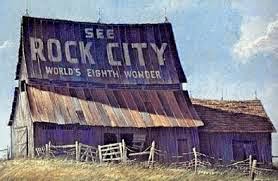(Georgia's second capitol building), built 1807-1837 (1937 photo)
Milledgeville is a city in and the county seat of Baldwin County in the U.S. state of Georgia. It is northeast of Macon along U.S. Highway 441 and is bordered on the east by the Oconee River. The rapid current of the river here made this an attractive location to build a city. It was the capital of Georgia from 1804 to 1868, notably during the American Civil War. Milledgeville was preceded as the capital city by Louisville and was succeeded by Atlanta, the current capital.
The population of the town of Milledgeville was 18,382 at the 2010 census.
Milledgeville is along the route of the under-construction Fall Line Freeway, which will link Milledgeville with Augusta, Macon, Columbus, and other Fall Line cities with long histories from colonial Georgia.
Milledgeville is the principal city of the Milledgeville Micropolitan Statistical Area, a micropolitan area that covers Baldwin and Hancock counties and had a combined population of 54,776 at the 2000 census.
The Old State Capitol building is located in the city.
History:
Milledgeville, named after Georgia governor John Milledge (in office 1802–1806), originated at the start of the 19th century as the new centrally located capital of the state of Georgia. It served as the state capital from 1804 to 1868.In 1803 an act of the Georgia legislature called for the establishment and survey of a town to be named in honor of the current governor, John Milledge. The Treaty of Fort Wilkinson (1802), in which the Creek people, hard pressed by debts to white traders, agreed to cede part of their ancient land, had recently made available territory immediately west of the Oconee River. The restless white population of Georgia continued to press west and south in search of new farmland, and the town of Milledgeville, carved out of the Oconee wilderness, helped accommodate their needs. The area was surveyed, and a town plat of 500 acres (2.0 km2) was divided into 84 4-acre (16,000 m2) squares. The survey also included four public squares of 20 acres (81,000 m2) each. In December 1804 the state legislature declared Milledgeville the new capital of Georgia. The new planned town, modeled after Savannah and Washington, D.C., stood on the edge of the frontier, where the Upper Coastal Plain merges into the Piedmont.
In 1807 fifteen wagons, escorted by troops, left Louisville, the former capital, carrying the treasury and public records of the state. The new statehouse, though unfinished, managed to accommodate the legislators. Over the next thirty years the building was enlarged with a north and south wing. Its pointed arched windows and battlements marked it as America's first public building in the Gothic revival style.
Governor Jared Irwin (re-elected in 1806) soon moved into a handsome two-story frame structure known as Government House, on the corner of Clarke and Greene streets. The new capital started as a rather crude frontier community with simple clapboard houses, a multitude of inns and taverns, law offices, bordellos, and hostelries. The town attracted several blacksmiths, apothecaries, dry-goods merchants, and even booksellers. Travelers to the town generally remained unimpressed, noting the ill-kept and overcrowded inns, the gambling, the dueling, and the bitter political feuds.
Life in the antebellum capital:
After 1815 Milledgeville became increasingly prosperous and more respectable. Wealth and power gravitated toward the capital, and the surrounding countryside became caught up in the middle of a cotton boom. Cotton bales would line the streets, waiting for shipping downriver to Darien. Such skilled architects as John Marlor (1789-1835) and Daniel Pratt (1799-1873) designed elegant houses; colossal porticoes, cantilevered balconies, pediments adorned with sunbursts, and fanlighted doorways all proclaimed the Milledgeville Federal style of architecture. The major congregations built fine new houses of worship on Statehouse Square. The completion in 1817 of the Georgia Penitentiary heralded a new era of penal reform.Public-spirited citizens such as Tomlinson Fort (mayor of Milledgeville, 1847–1848) promoted better newspapers, learning academies, and banks. In 1837-1842 the Georgia Lunatic Asylum (later the Central State Hospital) was developed. Oglethorpe University, where the poet Sidney Lanier was educated, opened its doors in 1838. (The college, forced to close in 1862, was rechartered in 1913, with its campus in Atlanta.)
The cotton boom significantly increased the demand for slave labor; planters bought slaves transported from the Upper South, and by 1828 the town claimed 1,599 inhabitants: 789 free whites, 27 free blacks, and 783 African-American slaves. The town market, where slave auctions took place, stood next to the Presbyterian church on Capital Square. Skilled black carpenters, masons, and laborers constructed most of the handsome antebellum structures in Milledgeville.
Two events epitomized Milledgeville's status as the political and social center of Georgia in this period:
- The visit to the capital in 1825 by the American Revolutionary War (1775–83) soldier the Marquis de Lafayette. The receptions, barbecue, formal dinner, and grand ball for the veteran apostle of liberty seemed to mark Milledgeville's coming of age.
- The construction (1836-38/39) of the Governor's Mansion, one of the most important examples of Greek revival architecture in America
The Civil War and its aftermath:
On January 19, 1861, Georgia convention delegates passed the Ordinance of Secession, and on February 4, 1861, the "Republic of Georgia" joined the Confederate States of America. Wild celebrations, bonfires, and illuminations took place on Milledgeville's Statehouse Square. In November 1864, on a bitterly cold day, Union general William T. Sherman and 30,000 Union troops marched into Milledgeville.When they left a couple of days later, they had ransacked the statehouse; vandalized the State Chapel by pouring honey down the pipes of the organ and by housing cavalry horses in the church; then destroyed the state arsenal and powder magazine; burned the penitentiary, the central depot, and the Oconee bridge; and devastated the surrounding countryside.
In 1868, during Reconstruction, the legislature moved the capital to Atlanta—a city emerging as the symbol of the New South as surely as Milledgeville symbolized the Old South.
Milledgeville struggled to survive as a city after losing the business of the capital. The energetic efforts of local leaders established the Middle Georgia Military and Agricultural College (later Georgia Military College) in 1879 on Statehouse Square. Where the crumbling remains of the old penitentiary stood, Georgia Normal and Industrial College (later Georgia College & State University) was founded in 1889. In part because of these institutions, as well as Central State Hospital, Milledgeville remained a less provincial town than many of its neighbors.
Notable People:
- Melvin Adams, Jr, better known as Fish Scales from the band Nappy Roots
- Kevin Brown, professional baseball player
- Earnest Byner, professional football player
- Joel Godard, television announcer
- Willie Greene, professional baseball player
- Nick Harper, professional football player
- Charles Holmes Herty, academic, scientist and businessman
- Leroy Hill, professional football player
- Blind Willie McTell, influential blues guitarist
- Bill Miner, Canada's "Gentleman Bandit"
- Flannery O'Connor, author
- Lucius Sanford, professional football player
- Ellis Paul Torrance, psychologist
- Carl Vinson, congressman
- J. T. Wall, professional football player
- Rondell White, professional baseball player
- Wally Butts, collegiate football coach
- Tillie K. Fowler, American politician
- Barry Reese, American writer
- Rico Washington, professional baseball player
- Larry Turner, professional basketball player
- Maurice Hurt, professional football player
Twentieth century:
As the old capital moved into the 20th century, it produced a number of people who would attain national prominence. Among these were the distinguished chemist Charles Herty; epidemiologist Joseph Hill White; Woodrow Wilson's treasury secretary, William Gibbs McAdoo; and Ulrich Bonnell Phillips, a noted historian of the South.The most famous 20th-century residents make up an unusual trio. In 1910 eighteen-year-old Oliver Hardy, of Laurel and Hardy fame, moved to Milledgeville, where his mother managed the stately old Baldwin Hotel, and stayed for three years. U.S. Congressman Carl Vinson represented his hometown of Milledgeville and central Georgia for fifty years (1914–65). The writer Flannery O'Connor came as a young girl with her family to Milledgeville from Savannah. O'Connor, a 1945 graduate of Georgia State College for Women, did much of her best writing in Milledgeville at her family's farm, Andalusia. (Today it offers public tours.) Her critically acclaimed short stories and novels have secured her reputation as a major American writer.
In the 1950s the Georgia Power Company completed a dam at Furman Shoals on the Oconee River, about 5 miles (8 km) north of town, creating a huge reservoir called Lake Sinclair. The lake community became an increasingly important part of the town's social and economic identity. In the 1980's and 1990's Milledgeville began to capitalize on its heritage by revitalizing the downtown and historic district. Another attraction, Lockerly Arboretum, offers tours of the facility's botanical gardens as well as educational programs and the Lockerly Heritage Festival each September. By 2000 the population of Milledgeville and Baldwin County combined had grown to 44,700. Community leaders have made concerted efforts to create a more diversified economic base, striving to wean the old capital from its dependence on government institutions such as Central State Hospital and state prisons - a task made more urgent by recent prison closures and job reductions at Central State, caused by tightening state budgets.
Current-day industries and occupations:
Milledgeville has hosted the Central State Hospital, Georgia's first public psychiatric hospital, since 1842 - residents of Milledgeville and central Georgia refer to it as "Central State". Parents seeking to ensure the good behavior of their offspring in the early 20th century would sometimes threaten that bad children "would be sent to Milledgeville".Government and infrastructure:
Baldwin State Prison (previously Georgia Women's Correctional Institution) of the Georgia Department of Corrections is located in Milledgeville.Old Governors Mansion
The Governor's Mansion (Milledgeville), also known as Old Governor's Mansion or Executive Mansion, is a mansion in Milledgeville, Georgia.
Georgia has had three official mansions and one unofficial mansion in two different cities. This one is the first Executive Mansion (1838-1868). It is still open for public tours. The state capital was moved from Milledgeville to Atlanta in 1868.
It was declared a National Historic Landmark in 1973.
The house is operated by Georgia College & State University as an antebellum historic house museum.
Atkinson Hall
Atkinson Hall is a historic building at Georgia College in Milledgeville, Georgia. Atkinson Hall was constructed in 1896. It is next to the Old Georgia Governor's Mansion. It was saved from demolition in 1977-78 by alumni, community support, faculty, and students. The building was home to the college's J. Whitney Bunting College of Business and is named for William Y. Atkinson and his wife, Susan Cobb Milton Atkinson. Susan Atkinson was involved in advancing women's education after communicating with he journalist friend, Julia Flisch. Atkinson persuaded her husband, a state legislator from Coweta (and future governor), to create legistlation establishing Georgia Normal & Industrial College in 1889. The building was added to the National Register of Historic Places on January 20, 1972.
External Links:
- City of Milledgeville official website
- Milledgeville-Baldwin County Convention and Visitors Bureau
- New Georgia Encyclopedia: Milledgeville
- Milledgeville Historic Newspapers Archive Digital Library of Georgia
- Baldwin County Schools
- Central State Hospital: Milledgeville
- Deep Roots Festival
- Bartram Educational Forest
- Lockerly Arboretum
- Old Governor's Mansion
- The Governor's Mansion (Milledgeville), also known as Old Governor's Mansion or Executive Mansion, is a mansion in Milledgeville, Georgia.
Georgia has had three official mansions and one unofficial mansion in two different cities. This one is the first Executive Mansion (1838-1868). It is still open for public tours. The state capital was moved from Milledgeville to Atlanta in 1868.
It was declared a National Historic Landmark in 1973.
The house is operated by Georgia College & State University as an antebellum historic house museum.
National Register of Historic Places listings in Baldwin County, Georgia







